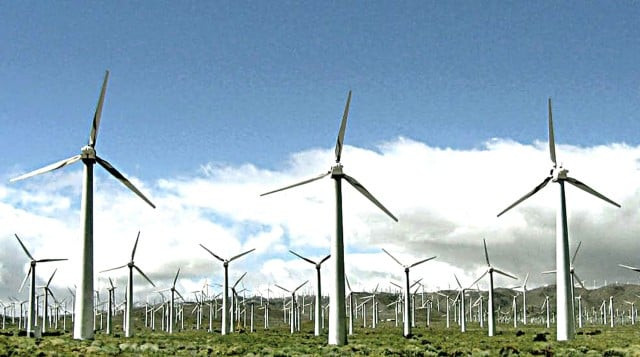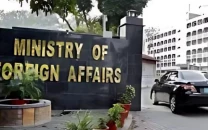Wind farms: a perpetual pipe dream

The print, electronic and internet media may be growing very fast but their inattention to this issue is alarming. Only a fraction of blogs, reports or talk shows focus on our chronic power shortage, while the parliament seems to be in a state of denial.
In stark contrast, the use of wind power is growing at phenomenal rate worldwide. Pakistan has the dubious distinction of not having a single wind farm operational although several are supposed to be in the pipeline; a pipeline that has turned out to be endless so far.
Wind power is the easiest to acquire, quickest to install, cheapest to sell and has the least adverse impact on the environment compared with other energy sources, even though though poets and artists may have legitimate objections to their aesthetic implications.
Noise pollution may also be an issue the manufacturers have to allay if they want to penetrate a mammoth market. These legitimate objections can be overcome by commissioning artists to paint the turbine in shades of green, grey and brown to blend in with the landscape. Acoustic engineers can install sound converters that make the sound emitting soothing even energizing.
Despite the fact that Pakistan has the potential to generate a staggering 50,000 megawatts, not a single pilot windmill let alone a wind farm has yet to see the light of day.
After decades of guzzling taxpayer money, Pakistan’s apex regulatory body, the Alternate Energy Development Board (AEDB) has failed to bypass the inevitable resistance to new technology.
Wind maps of Pakistan show large farmable wind corridors in interior Sindh, eastern Balochistan, north eastern Punjab and Gilgit-Baltistan. All of these would be ideal for wind farms because most of the land under them is not arable. The terrain may be formidable in some cases and the security situation dangerous but the rewards would be well worth the risks.
Equipment like high cranes and expertise to install them may be lacking but once the wind farms are up they require little maintenance and have life spans of 20 to 50 years depending on the quality of equipment and the meticulousness with which it is maintained and upgraded.
Poor or nonexistent post-installation maintenance is a hallmark of Pakistani development projects. And it is a recurring nightmare that everyone spending Pakistani taxpayers money have to collectively wake up from. Budgetary, material and man-power allocations for this in the original plan are a straight forward answer to this malaise.
From the local and foreign entrepreneur’s perspective, all the risks can be hedged but the project as a whole should survive well beyond its break-even point which often transcends the short, unpredictable life-span of political governments in Pakistan. The increasingly mature legislature should realize its quintessential role in debating the issue. In its present reconciliatory mindset, a “Wind Farm Promotion and Sustenance Act” does not seem to be too far-fetched a day dream.
The usual sovereign guarantees, tax holidays, custom duty exemptions, “real” one window facilitation, tangible security arrangements and a realistic win-win tariff framework could be transparently embedded in the proposed Act.
Of course, the AEDB needs an overhaul with infusion of patriotic, self motivated technocrats with market-driven pays and incentives. Online joint ventures with leading foreign consultancies would be a prudent investment that would yield enormous dividends. Sub-cultural changes through innovative introduction of information technology can alleviate bureaucratic delays to some extent. But real attitudinal changes can only occur through high quality on the job training. Trainers should realize that their role is not just confined to converting information that they deliver into skills. Their mission impossible is to motivate and inculcate permanent attitudinal changes.
Another approach which is intrinsic to other cultures but somewhat alien to ours is a community or individualistic approach. Imagine rustic turban-clad farmers in an arid area of northern Punjab jumping with joy on the first spout of water from their wind powered tubewell, installed on a partially self help basis, hugging the dedicated NGO engineers who helped them install the system.
No matter how Utopian the scenario may appear, there can be no harm if at least one pilot project of this sort is launched in all of the major wind corridors of Pakistan. Some committed NGOs are already silently working on such creative solutions. The completion time for such projects would be short. The farmers would own and jealously guard and maintain it. Wasteland would turn green. Produce would be cheaper. And envious neighbors would clamor for a windmill of their own: viola a crop of thousand exotic gigantic windmills will be harvested on a self financing basis.
Published in The Express Tribune, July 12th, 2010.



















COMMENTS
Comments are moderated and generally will be posted if they are on-topic and not abusive.
For more information, please see our Comments FAQ